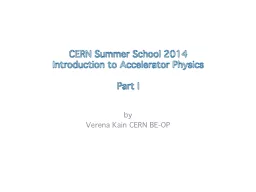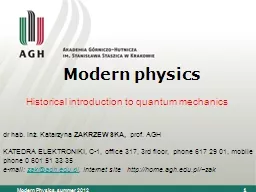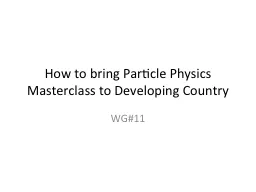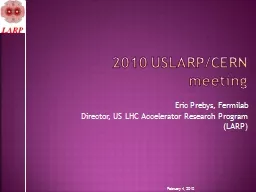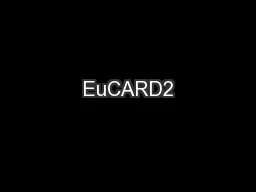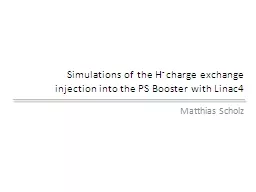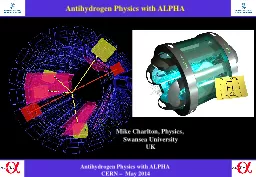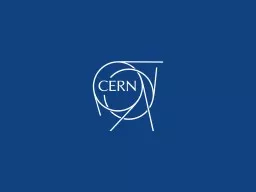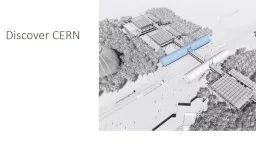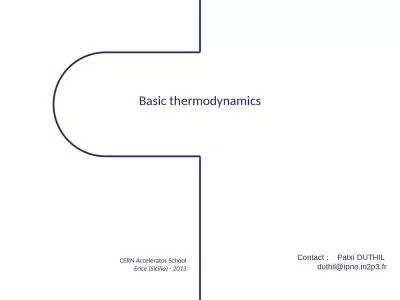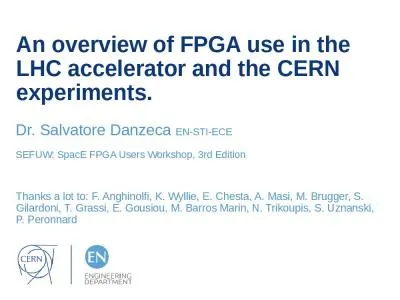PPT-CERN Summer School 2014 Introduction to Accelerator Physics
Author : hoodrona | Published Date : 2020-06-15
Part I by Verena Kain CERN BEOP Acknowledgement These lectures are based on lectures given by Bernhard Holzer at the CAS CERN Accelerator School Oliver Bruning
Presentation Embed Code
Download Presentation
Download Presentation The PPT/PDF document "CERN Summer School 2014 Introduction to ..." is the property of its rightful owner. Permission is granted to download and print the materials on this website for personal, non-commercial use only, and to display it on your personal computer provided you do not modify the materials and that you retain all copyright notices contained in the materials. By downloading content from our website, you accept the terms of this agreement.
CERN Summer School 2014 Introduction to Accelerator Physics: Transcript
Download Rules Of Document
"CERN Summer School 2014 Introduction to Accelerator Physics"The content belongs to its owner. You may download and print it for personal use, without modification, and keep all copyright notices. By downloading, you agree to these terms.
Related Documents

